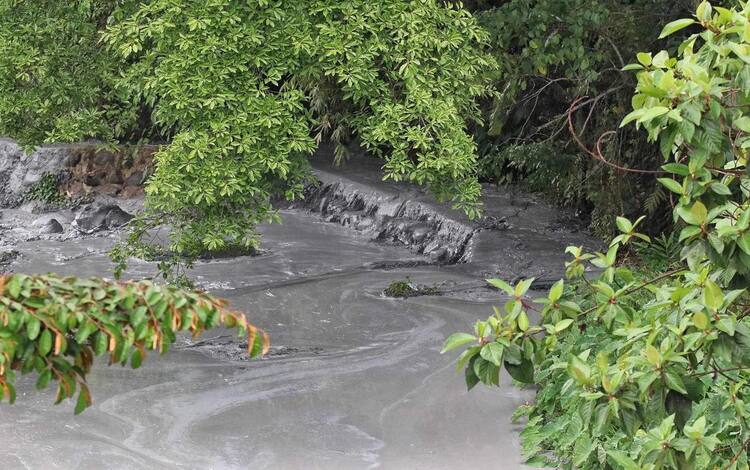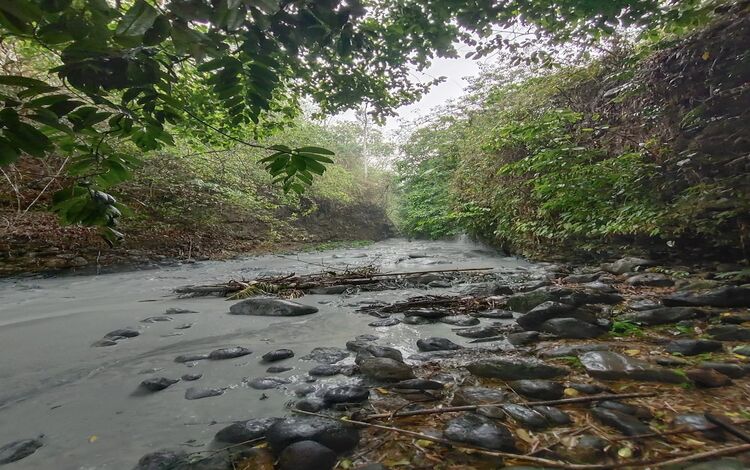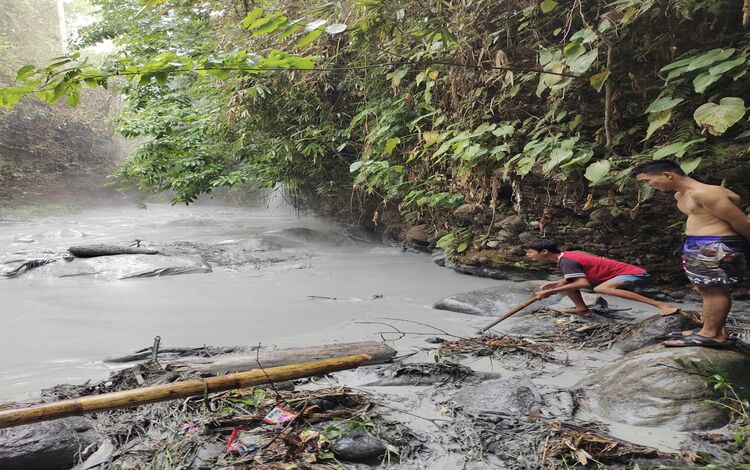At 11:00 PM, the Philippine Institute of Volcanology and Seismology (PHIVOLCS) issued a crucial advisory confirming the presence of lahar flows in La Castellana. This confirmation came from the PHIVOLCS’ Quick Response Team (QRT), which was conducting fieldwork in the area.

The situation evolved over the day. Earlier, PHIVOLCS La Carlota Substation reported that the flow observed in La Castellana was not lahar but merely volcanic ash carried by rainwater. However, subsequent investigations by the Quick Response Team definitively identified the flow as lahar, necessitating an urgent advisory to inform and prepare the affected communities.

Lahar, a dangerous volcanic mudflow, poses significant risks due to its fast-moving nature and the debris it carries. The confirmation of lahar flow has prompted PHIVOLCS to closely monitor the situation and advise the public, especially those residing near the affected waterways, to remain vigilant.
The waterways impacted by the lahar flow include:
- Tamburong Creek: This creek passes through Biak-na-Bato and Calapnagan in La Castellana. Given the lahar flow, residents near this creek should be particularly cautious.
- Intiguiwan River: Flowing through Guinpanaan and the upstream areas of Baji-Baji Falls in Cabacungan, La Castellana, this river is another critical point of concern.
- Padudusan Falls: Located in Masulog, Canlaon City, the areas around these falls are also experiencing the effects of the lahar flow.
- Binalbagan River: This river, which drains the southern flank of Kanlaon Volcano, is now a channel for the lahar flow, further increasing the risk for nearby communities.

PHIVOLCS has emphasized the need for residents to be prepared for potential evacuations, avoid traversing affected waterways, and stay tuned to further advisories. Local authorities are urged to assist in disseminating information and ensuring that emergency measures are in place.
The rapid response of the PHIVOLCS Quick Response Team highlights the importance of continuous monitoring and fieldwork in mitigating the impact of natural disasters. By promptly identifying the lahar flow, PHIVOLCS has enabled communities to take necessary precautions and potentially save lives.
As the situation develops, PHIVOLCS will continue to provide updates and work with local governments to ensure the safety and well-being of all affected residents. The cooperation of the public in adhering to advisories and staying informed is crucial during this time of heightened volcanic activity.
